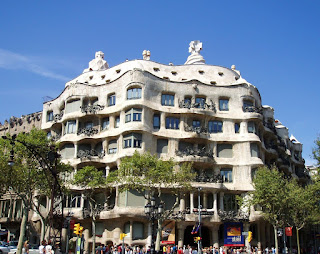In 1469, Ferdinand II of Aragon and Isabella I of Castille were married, unifying Spain and making it a European power. Then, in 1492, Spain was claimed for Christianity at the Siege of Granada. Because of this seige, military men became concerned with codes of chivalry and honor. Spain did not become involved in the renaissance until about 30 years after it started.
However, once Spain did become involved in the renaissance, it was quite different than many other places. Both secular and religious drama existed at the same time. Both state-sponsored theatre and for-profit theatre existed at the same time. While a "golden age" usuallyl isn't literal, Spain's almost was. Much of the money that supported theatre came from gold, spices, and slaves.
A variety of genres of plays existed during the Spanish Golden Age. However, the main genres were probably auto sacramentales, zarzuelas, and comdeias. Auto sacramentales are religious plays that reflected Spain's Catholic devotion. Zarzuelas are Spanish lyric-dramas that alternate between spoken and sung scenes. The sung scenes would use both operatic and popular songs as well as dance. Felix Lope de Vega y Carpio (Vega) was one of the major creators of comedias. Comedias did not have strict rules. They depended on observations and suggestions, allowing playwrights to experiment. However, comedias did have features that seemed to be common through most of them such as three-act structures, mixtures of tragedy and comedy, and a variety of verse form, but almost never any prose in a play.
Unlike most of Europe during the Renaissance, After 1587 women were allowed to act. Thus, heroines were played by women. Because of this, women disgusing themselves as men became a common plot device. However, after 1599, the Spanish government change its laws about women acting to that in order for a woman to act, she had to be married to a man in a professional troupe.
It is thought that around 30,000 plays were produced during the Spanish Golden Age. There is criticism about this many plays being that there is the idea that quantity was seen as more important than quality. However, because there are so many plays, this gives researchers plenty of material to study about the plays of the era.
If you enjoy my content, please consider becoming one one of my patrons through Patreon at https://www.patreon.com/TheatreGeek where I will be sharing more in depth content, answering your questions, sharing which types of software I use and how to find them, and more. By becoming my patron, you allow me to create more content about theatre and more theatrical content.

No comments:
Post a Comment